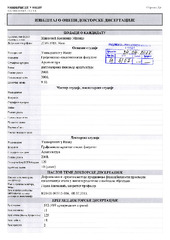Приказ основних података о дисертацији
Definisanje i primena metode vrednovanja fleksibilnosti prostorne organizacije stana u višeporodičnim stambenim objektima
| dc.contributor.advisor | Jovanović, Goran | |
| dc.contributor.other | Mitković, Petar | |
| dc.contributor.other | Lojanica, Vladimir | |
| dc.creator | Živković, Milica B. | |
| dc.date.accessioned | 2018-05-12T14:44:51Z | |
| dc.date.available | 2018-05-12T14:44:51Z | |
| dc.date.available | 2020-07-03T15:57:34Z | |
| dc.date.issued | 2017-09-22 | |
| dc.identifier.uri | https://nardus.mpn.gov.rs/handle/123456789/9435 | |
| dc.identifier.uri | http://eteze.ni.ac.rs/application/showtheses?thesesId=5760 | |
| dc.identifier.uri | https://fedorani.ni.ac.rs/fedora/get/o:1453/bdef:Content/download | |
| dc.identifier.uri | http://vbs.rs/scripts/cobiss?command=DISPLAY&base=70052&RID=533949590 | |
| dc.description.abstract | Standardization of housing in compliance with sustainable development represents a great challenge for contemporary architectural practice, particularly in less developed social environments, which is still founded methodologically on inherited social models. Sustainable housing that could with its physical properties address the changeable needs of society in the long-term should be based on the concept of flexibility and the principal of a free choice. Contemporary social conditions require wide diversification of programmes in a space-user relation, especially within the framework of the narrowest housing environment, i.e. a flat. The right to equality and self-system of value within the physical framework of the flat represent a material aspect of socially responsible acting and the measure of a social sustainability of the environment. The particular research in a certain way represents the method of evaluating internal flexibility of the flat in multi-family residential buildings and explores the potentials for its application in practice. The aim of the research is to improve the methodology of planning and designing through the affirmation of flexible housing models that will, ultimately, provide a functional and social sustainability of the urban setting. The reference framework of the research, spatial aspects and criteria for evaluation of flexibility underlie the methodological procedure. Specific aspects of flexibility relate to the dispositional, structural and formal determinants of the plan. The evaluation criteria relate to the spatial performances that indicate the degree of freedom achieved in the interior space. By processing and analysing the results of the evaluation, certain spatio-physical principles that directly affect the flexibility and utility value of the flat are determined. Implementation of the defined method is demonstrated on the example of contemporary residential architecture in the city of Niš and aims to identify the characteristics of the local design and construction methodologies in the context of flexibility. In order to evaluate the current housing needs, a research of housing conditions and satisfaction of users in the city of Niš was conducted. Using the results of theoretical and empirical studies, the general principles of flexible design are defined and recommendations for improving the quality of housing are formulated. | en |
| dc.format | application/pdf | |
| dc.language | sr | |
| dc.publisher | Универзитет у Нишу, Грађевинско-архитектонски факултет | sr |
| dc.relation | info:eu-repo/grantAgreement/MESTD/Technological Development (TD or TR)/36042/RS// | |
| dc.rights | openAccess | en |
| dc.rights.uri | https://creativecommons.org/licenses/by/4.0/ | |
| dc.source | Универзитет у Нишу | sr |
| dc.subject | fleksibilnost | sr |
| dc.subject | flexibility | en |
| dc.subject | sustainability | en |
| dc.subject | multi-family housing | en |
| dc.subject | flat | en |
| dc.subject | evaluation method | en |
| dc.subject | održivost | sr |
| dc.subject | višeporodično stanovanje | sr |
| dc.subject | stan | sr |
| dc.subject | metod vrednovanja | sr |
| dc.title | Definisanje i primena metode vrednovanja fleksibilnosti prostorne organizacije stana u višeporodičnim stambenim objektima | sr |
| dc.type | doctoralThesis | en |
| dc.rights.license | BY | |
| dcterms.abstract | Јовановић, Горан; Митковић, Петар; Лојаница, Владимир; Живковић, Милица Б.; Дефинисање и примена методе вредновања флексибилности просторне организације стана у вишепородичним стамбеним објектима; Дефинисање и примена методе вредновања флексибилности просторне организације стана у вишепородичним стамбеним објектима; | |
| dc.identifier.fulltext | https://nardus.mpn.gov.rs/bitstream/id/51262/Disertacija.pdf | |
| dc.identifier.fulltext | https://nardus.mpn.gov.rs/bitstream/id/51263/Zivkovic_Milica_B.pdf | |
| dc.identifier.fulltext | http://nardus.mpn.gov.rs/bitstream/id/51262/Disertacija.pdf | |
| dc.identifier.fulltext | http://nardus.mpn.gov.rs/bitstream/id/51263/Zivkovic_Milica_B.pdf | |
| dc.identifier.rcub | https://hdl.handle.net/21.15107/rcub_nardus_9435 |



